Keep the Power Flowing
Staff Spotlight: Chris Dominick, Assistant Director of Plants, Mechanics and Operation

“We are the unsung heroes like Tom Bodett from Motel 6. We’ll keep the lights and air conditioning on for y’all.”
- Chris Dominick
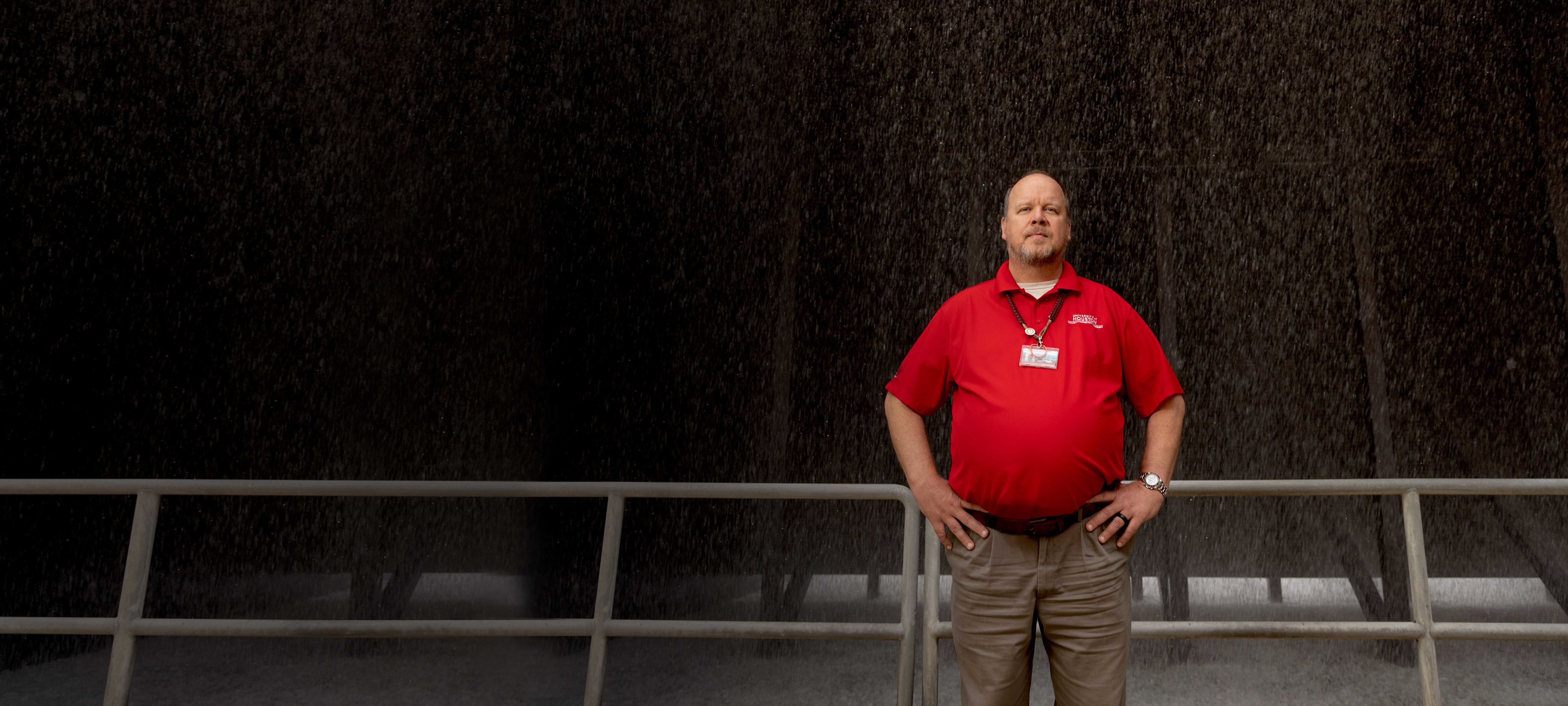
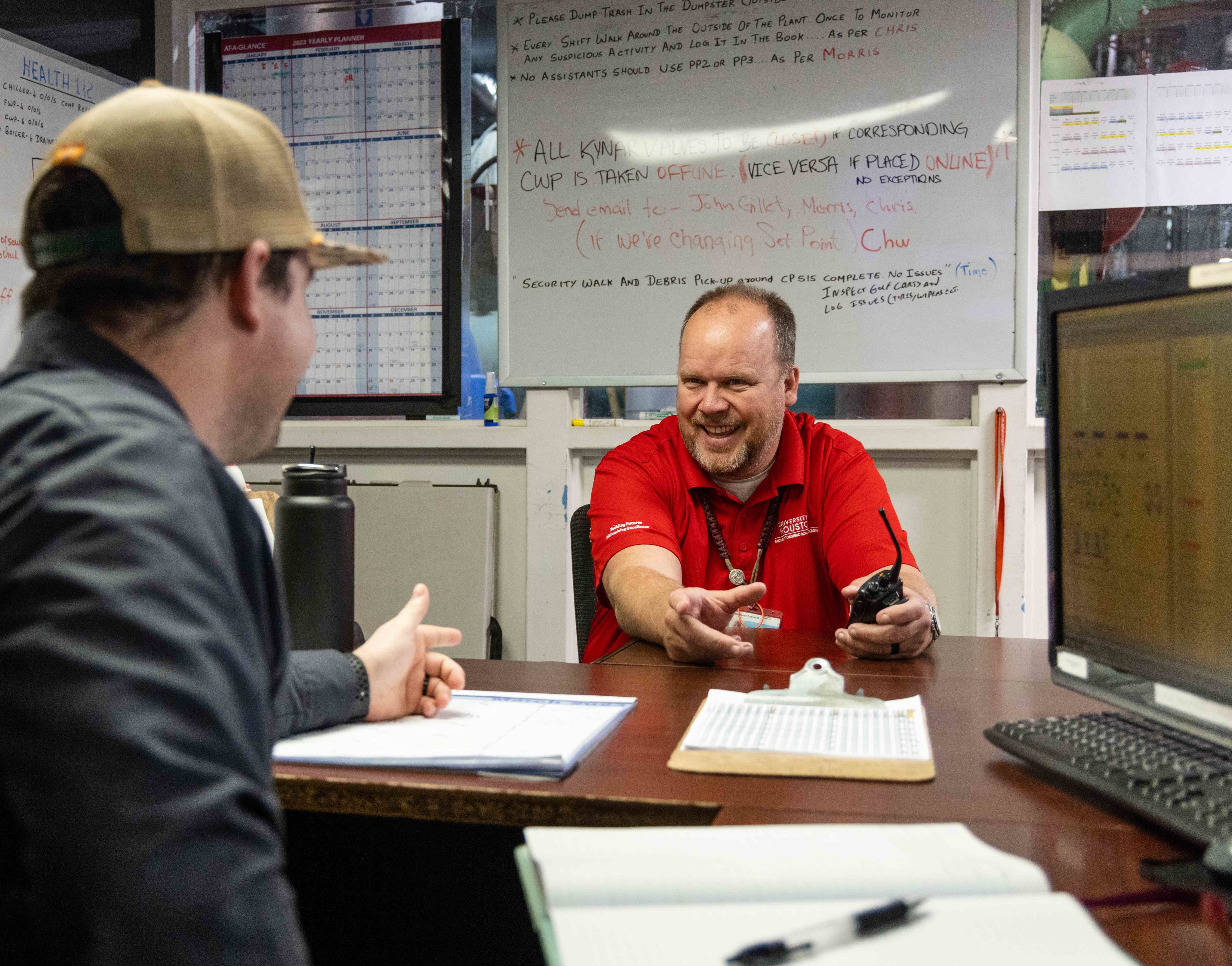
Chris Dominick, assistant director of Plants, Mechanics and Operation, understands that it takes a dedicated team to keep a power system as large as UH's operational.
Chris Dominick, assistant director of Plants, Mechanics and Operation, understands that it takes a dedicated team to keep a power system as large as UH's operational.
Under the sprawling 600-plus acres of the University of Houston campus – beneath the trees, buildings, fountains and our feet — three miles of tunnels exist unseen and yet essential to University operations.
Thanks to the hard work of employees like Assistant Director of Plants, Mechanics and Operation Chris Dominick, chilled water, electricity and steam are generated in astounding quantities at the Central Plant – located at the heart of campus. And 24/7, these utilities work their way through the tunnels, moving from building to building, ceaselessly powering UH’s mission to become a Top 50 public university.
As Dominick likes to say, “We are the unsung heroes like Tom Bodett from Motel 6. We’ll keep the lights and air conditioning on for y’all.” During a break from monitoring these complex systems, Dominick took a few minutes to share why this work is fulfilling and the real purpose of that beautiful water wall in the center of campus.

What brought you to UH?
I’ve worked here a year, and I have to say that job satisfaction makes me stay.
I first got to know UH when several family members, including my daughter, graduated from the University. I liked the campus, and when I heard about an opening in the Central Plant, I applied.
What do you like most about your job?
I've always looked for jobs that hold a higher calling. Sometimes I put it like this: I’m here for that young student from Lubbock who wants to get an education — I’ll make sure she has hot showers, hot meals, a nice warm dorm room during the winter and a nice cool one in the summer … all so she can focus on getting a well-rounded education. So, I like that.
What’s your training background?
I have 33 years of experience in working on boilers and chillers, including 22 years in the U.S. Navy.
Exactly what is the function of UH’s Central Plant, and how does it work?
We work to make chilled water and steam using water from the city of Houston. These are used to heat and cool structures and provide potable water for the facilities at UH.
What surprises people about the Central Plant?
They’re surprised that the Central Plant actually looks like an office building on the outside. If you get a little closer, you can start to hear the falling water and the cooling towers — but otherwise it looks like any other building on campus. But inside, it’s wide open to hold the equipment. We do this to maintain the beauty of our campus. Rather than seeing big piping and a very industrial look, we see trees and green space.
Tell us about the tunnels under our campus. How many miles of tunnels are there, and how are they used?
Well, there are about 16 million square feet on campus — under that, we have about three miles of tunnels that go around the campus and into the buildings. From an architectural standpoint, all of our chilled water, steam and utilities, electricity and everything run underground through these tunnels, which are about eight feet high and 12 feet wide.
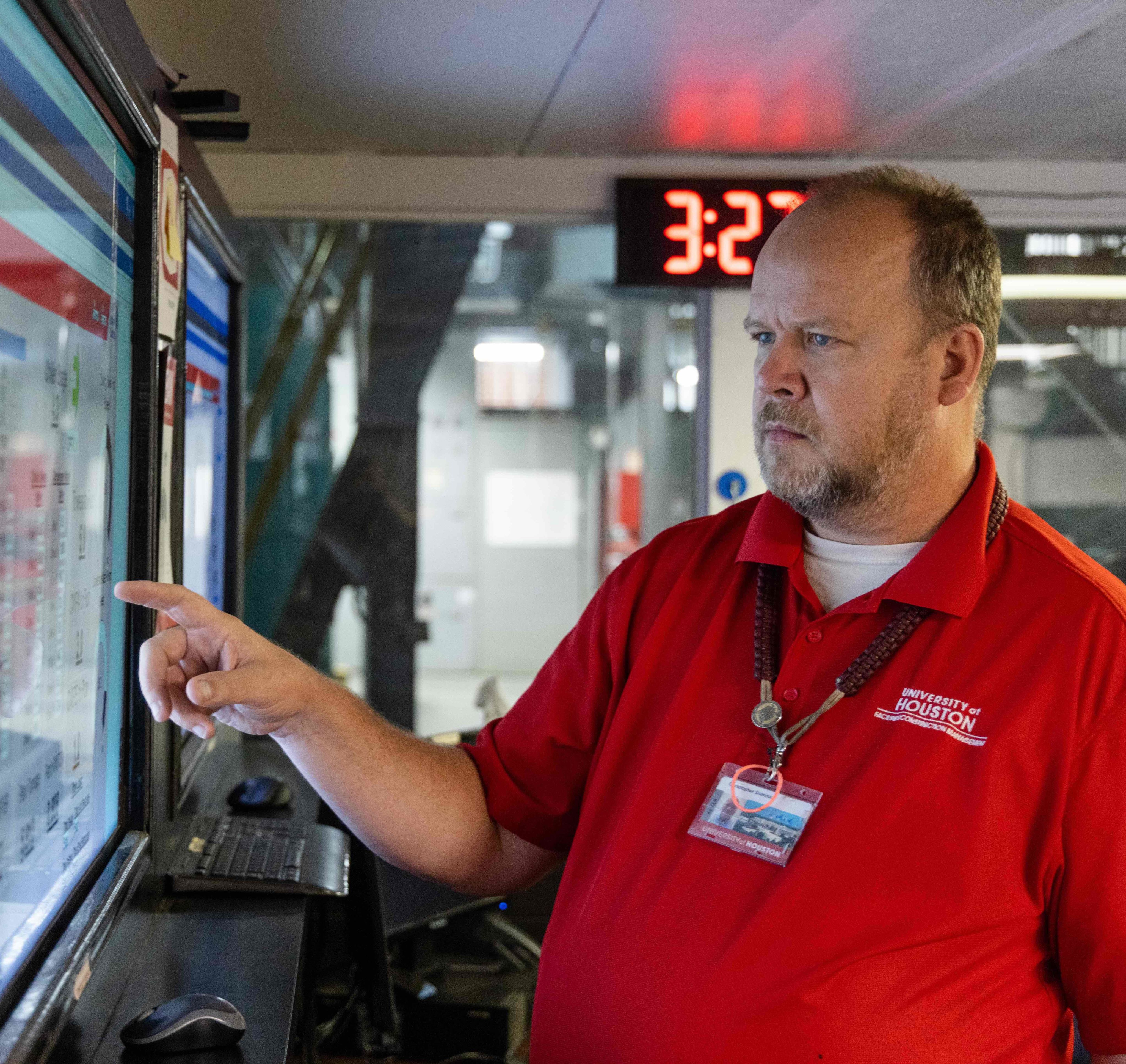
Chris Dominick explains some of the complex technology required to operate the UH Central Plant.
Chris Dominick explains some of the complex technology required to operate the UH Central Plant.
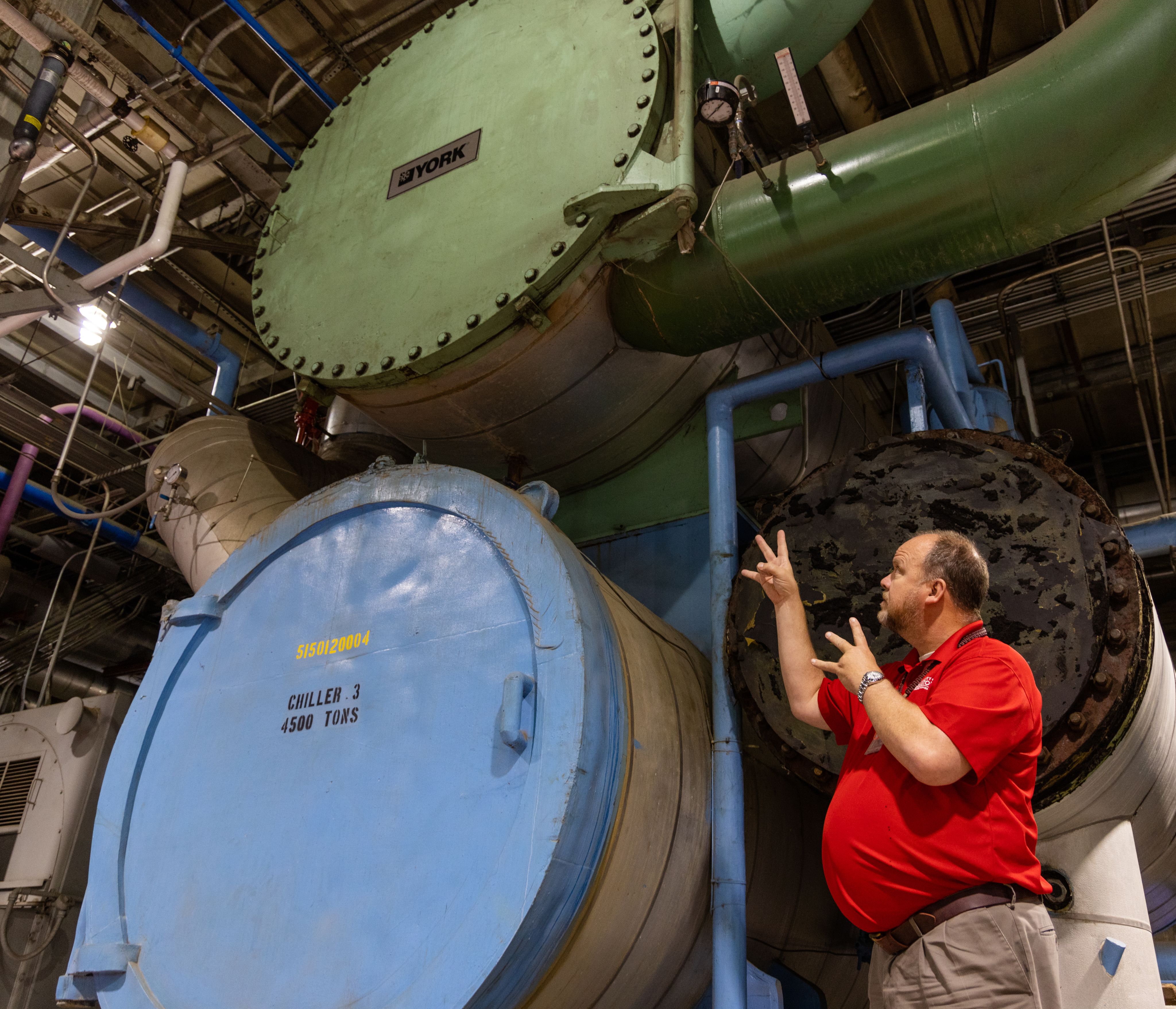
Chris Dominick enjoys giving tours of the plant - the size of the operation is often surprising to visitors.
Chris Dominick enjoys giving tours of the plant - the size of the operation is often surprising to visitors.

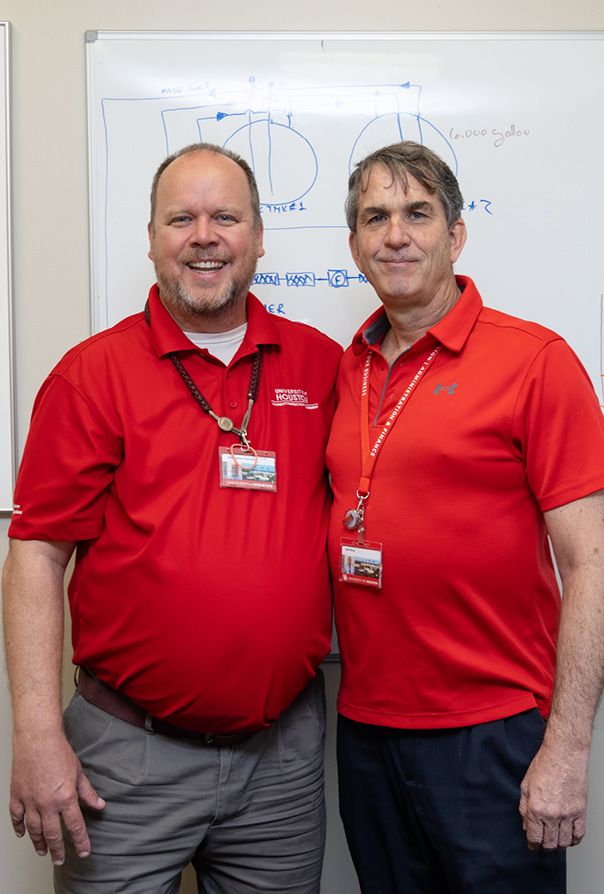
Chris Dominick and his supervisor, Director of Utility Operations John King.
Chris Dominick and his supervisor, Director of Utility Operations John King.
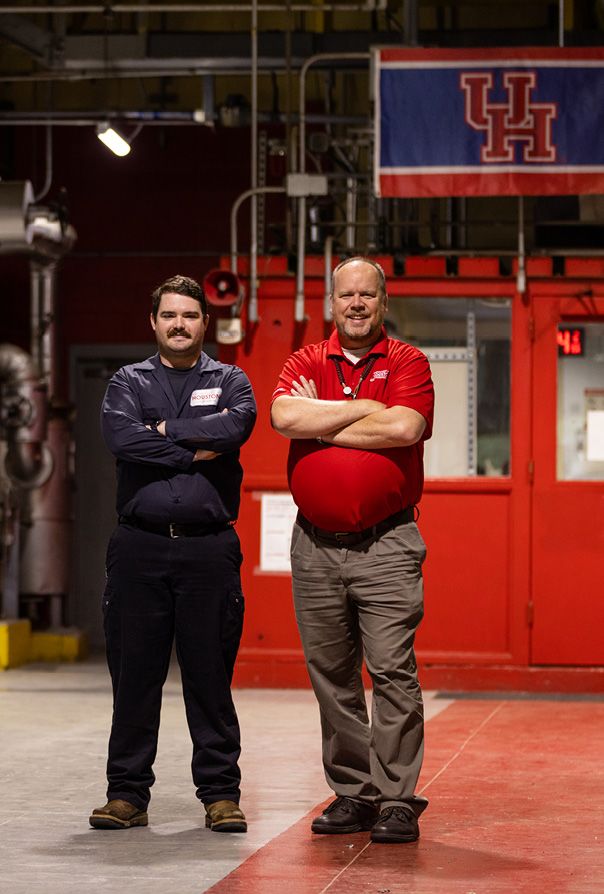
UH Central Plant stationary engineer Colton Lamb (left) and Chris Dominick are proud of the work they do to keep the lights on and the power flowing at UH.
UH Central Plant stationary engineer Colton Lamb (left) and Chris Dominick are proud of the work they do to keep the lights on and the power flowing at UH.
What’s a challenge your team has faced at the Central Plant that you’re proud of the outcome?
We had a freeze in December 2022, and it was challenging to maintain the utilities on campus. We were able to do it with a coordinated effort among all the different groups.
You have to remember, we have students from every continent, and we had some unable to make it home [for the winter break] — they stayed here on campus. So, our biggest challenge was to ensure they still had utilities. We succeeded under the leadership of David Oliver, senior associate vice chancellor/associate vice president of facilities/construction management.
Lloyd Greenard, assistant director of distribution, and I were here sometimes 16 hours a day through the entire event, which lasted about 10 days.
What are some interesting facts about the Central Plant?
We put out approximately 18,000 tons of chilled water an hour, and we use a tremendous amount of electricity. Your house might use about 412 kilowatts monthly, whereas we use 33,000. Those are some pretty big numbers.
That chilled water moves through 16.7 million square feet to reach the 156 buildings throughout the campus. The amount of power we generate is equal to powering 35,000 homes.
What is the purpose of the water wall visible outside the Central Plant – other to be the biggest “calm” app on campus? What does it do and how many gallons does it process?
The condensing water acts like a rain forest, so as the Central Plant generates lots of heat from power generation, that hot water is transferred to the cooling tower and as it drips, heat is released into the atmosphere, just like a rain forest stays relatively cool by transferring its the heat into the atmosphere.
What’s something about you that others at UH might not know?
While I was in the Navy, I was on submarine duty, which is a ship that was about 360-feet long and 40-feet wide, with 160 people. We went hundreds of feet deep in the ocean to support missions all over the world.
What do you like to do when you’re not working?
I like to snow ski, scuba dive and pick on Mr. David Oliver about his beloved Dallas Cowboys.
Describe yourself in three words.
Very motivated individual.
Describe UH in three words.
Community-service dedicated.

